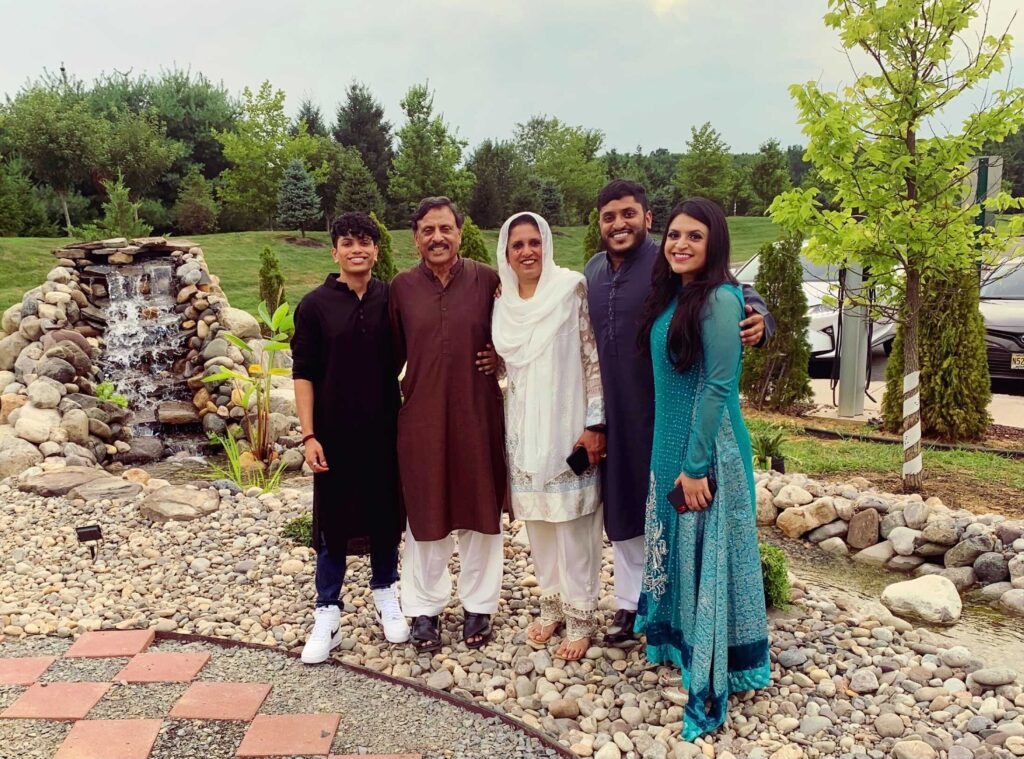
Buying new outfits, rushing to the salon the day before, putting on henna with your friends and family. All these activities point towards one thing: getting ready for Eid.
Now, there are two Eids with which most of you may be acquainted: Eid Ul-Fitr and Eid ul-Adha. Eid ul-Fitr is the ‘Feast’ to mark the end of Ramadan and fasting. The latter is known as the ‘Feast of Sacrifice.’
The distinction between the two festivities for me is very minimal. Usually, on Eid ul-Adha, I tend to purchase a simpler outfit and have a ton of hearty beef for lunch and dinner cooked by my dad, versus a heavier outfit and sweets by my mom on Eid ul-Fitr, or Rojar Eid. The rest, hanging with family and visiting my Nani’s house, is consistent. And, of course, the Eidi is fairly lighter on Eid ul-Adha. Regardless, little me never let go of her matching purse on both occasions.

Photo credit: Shezda Afrin
Let’s take a trip down memory lane and ask fellow Brown Girls about the holiday, specifically Eid ul-Adha.
[Read Related: Eid 2021 Trends: Follow Some and say Goodbye to Others]
Duriba Khan
Growing up, the highlight of every Eid for me and my cousins was begging my dad to drive us to Starbucks. After every Eid namaz, Pappa promised to treat us all to our own tall-sized concoction of mainly sugar as a reward for fasting or getting ready in time for prayer. During Eid prayer, my cousins and I would extensively discuss our drinks of choice during the sermon until a nearby Aunty angrily shushed us. After we got our drinks, we always excitedly belted out a harmonious ‘thank you!’ from the backseat of my mom’s Honda Odyssey, trying each other’s drinks and commenting on the flavors the rest of the ride home.
Times have changed. Most of us don’t even live in the same city anymore, and on many occasions, have to skip Eid prayer due to other responsibilities like an approaching exam. Although years have passed since we all visited Starbucks together after Eid prayer, our tradition lives on.
Even if we haven’t talked in weeks, every Eid our group chat explodes with photos of us and our 12-ounce cups of shared bliss. Photos are often blurry, pouring in from different offices and libraries, but the way they look never matters to us. The photos are important because of what they represent: that no matter what state, graduate program, or phase of life has held us back from celebrating together, one thing will never change. At some hour of Eid, we will all share a blissful moment of a simple, refreshing sip and bask in nostalgia.
Queenie Shiekh

Photo credit: Queenie Shiekh
Growing up, I’d always go to my Nani and Nana’s house on Chaand Raat to see if the moon was visible. My cousins and I always wanted to climb their rooftop and then try and sight it. Whoever was able to find it first got a little monetary present from both grandparents — money spent on buying biryani from the local desi restaurant! It’s a tradition we’ve always lovingly followed.
Aysha Qamar

Photo credit: Aysha Qamar
Transitioning from an Islamic school where we were off on holidays and celebrated Eid, to a public school that didn’t even know what the holiday was, was difficult. But family traditions like dressing up, reflecting on our blessings, and exchanging gifts made it easier. My family makes a big deal out of both Eid ul-Adha and Eid ul-Fitr and made sure we never felt our holidays were less. Eid for me is a time of family, unity, and love, and despite the pandemic, that feeling hasn’t changed.
Aisha Taras
Since I do have quite a small family, we don’t have many rituals. However, one we have all the time is dressing up; it could be a new outfit or an older one restyled! But, without fail, we do that every year and this year I managed to snag myself and my 2-year-old matching dresses!!! It was our first time, so I’m feeling really happy about that! My best memory would be when I traveled back to Canada to spend Eid last year with my family! It’s the first time my husband and kid spent the holiday with them.
Nida Hasan
Eid ul-Adha is all about the meat. First things first, the morning starts with helping mom divide all the meat for distribution. And by noon, we are all set for the family lunch, which always includes my mom’s famous Bhuna gosht. But since we moved away from home, that’s sort of become a favourite memory. Here I have taken on my mom’s role of cooking up something meaty, which I then take to my brother’s house on Eid day where we all meet up.
In terms of styling, I usually prefer to dress down on Bari Eid compared to Eid ul-Fitr. So I wear something cotton and airy with a bit of embroidery. However, last Eid was spent in a lockdown, so I have decided to go all out for this one and plan on looking my best, fingers crossed.

Photo credit: Shezda Afrin
Traditions are what make holidays personal. Everyone has that one unique routine or memory that symbolizes Eid. What is more interesting is the fact that there are two such holidays, yet there are nuances that differentiate them for each of us. This Eid, we get to celebrate it with our loved ones as the pandemic eases. Let’s make and create new memories.




